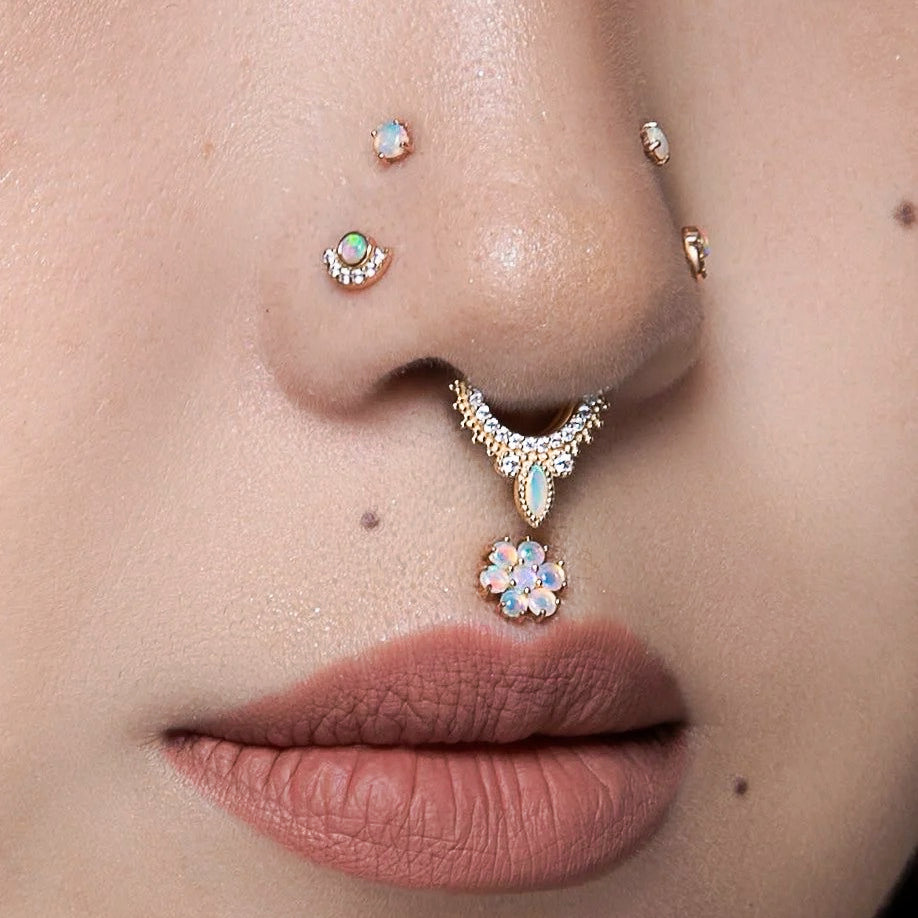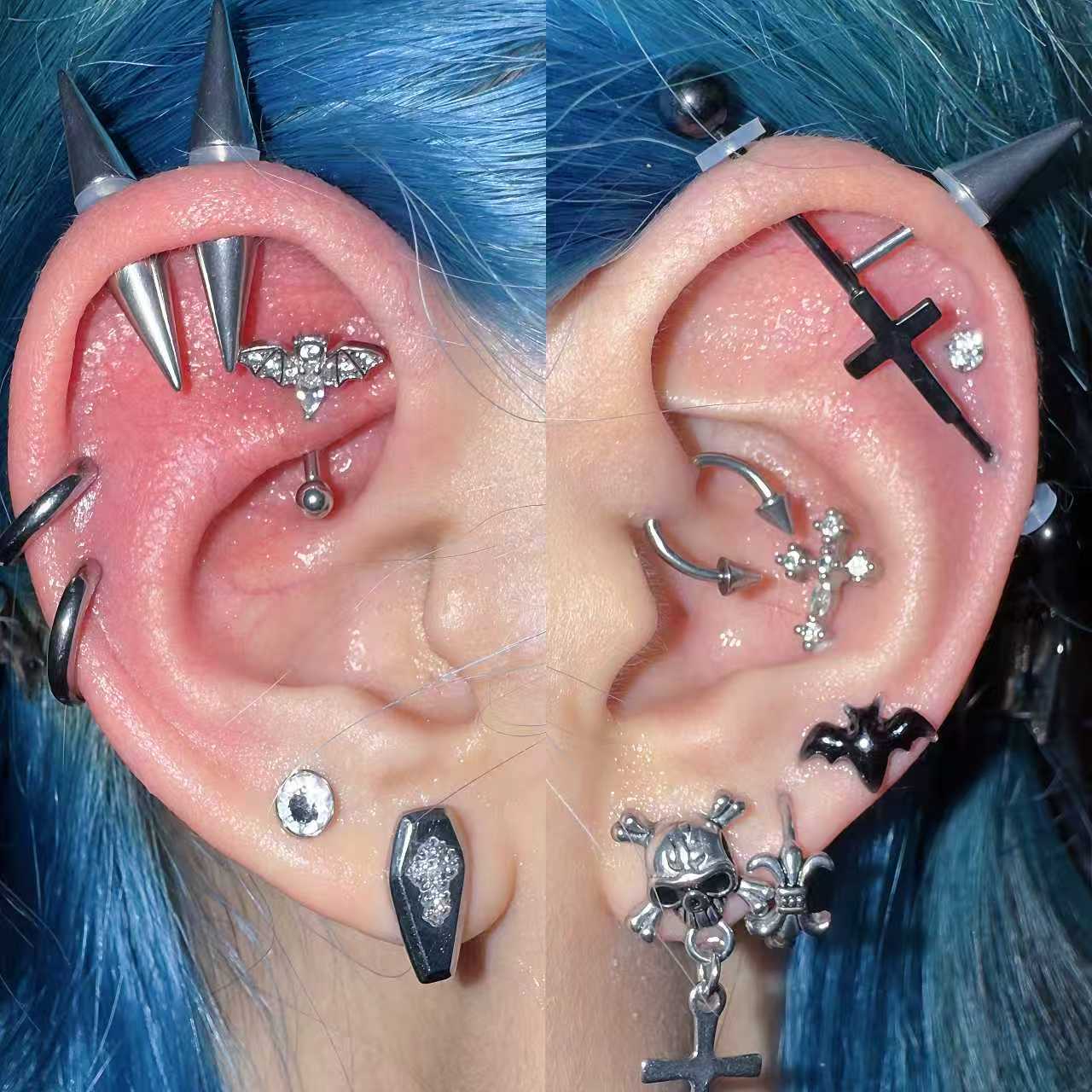
The Definitive Guide to Nose Piercing Styles
The History of Nose Piercing Fashion
- Nose piercing is far from a modern fad. Its history is a fascinating global tapestry, woven across centuries and continents, rich with cultural, social, and spiritual meaning that predates its current fashion status by millennia.
- The earliest recorded evidence points to the Middle East over 4,000 years ago. The Bible's Book of Genesis (Chapter 24, Verse 22) mentions a golden shanf (often translated as nose ring) given as a precious gift, highlighting its value in ancient societies. This practice was deeply rooted among nomadic tribes like the Bedouins, Berbers, and Beja. Here, the nose ring, often worn by women, was not merely ornamentation; it was a symbol of wealth, social status, and family wealth. Its size and material directly correlated to the family's riches. Crucially, it also served as a form of financial security for the woman. In the event of her husband's death or divorce, the nose ring could be sold or used as currency to support her.
- The tradition was introduced to the Indian subcontinent by Mughal emperors in the 16th century. It was here that nose piercing became profoundly integrated with Ayurvedic medicine and spirituality. Piercing the left nostril was specifically believed to be connected to the female reproductive organs. It was thought to alleviate menstrual cramps, enhance fertility, and significantly ease childbirth—a belief that persists in some communities today. Indian women traditionally wore elaborate studs, often connected to the ear by a delicate chain known as a nathla or nath, which became a quintessential part of bridal attire.
- Nose piercings journeyed to the Western world in the 1960s and 70s, brought back by hippies inspired by their spiritual and physical travels to India. They adopted it as a symbol of their counter-cultural movement and embrace of Eastern philosophies. Shortly after, the punk subculture co-opted the piercing, particularly the septum ring, as a bold symbol of rebellion, non-conformity, and anti-establishment sentiment. For decades, it was stigmatized and often a barrier to employment.
- However, over the past 20-30 years, it has been wholeheartedly embraced by mainstream fashion. This shift is largely credited to celebrities, models, and influencers who began showcasing a diverse range of styles, from delicate gold studs to bold septum rings, on red carpets and in fashion magazines. This demystified the piercing, transforming it from a symbol of rebellion into a widely accepted and celebrated form of personal expression and adornment.
The 10 Types of Nose Piercings
From Classic to Avant-Garde
- Choosing a nose piercing is a deeply personal decision that blends aesthetics with anatomy. This expanded guide delves into the intricate details of each style, empowering you to make an informed choice that complements your unique features and lifestyle.

1. Nostril Piercing
-
Placement & Technique: The most versatile and popular placement is in the supra-alar crease—the natural curve where the nostril meets the cheek. This spot targets a thinner area of cartilage, reducing pain. A hollow needle is used for precision and hygiene.
-
Jewelry Options: Extremely diverse. Includes:
-
Studs: Ideal for healing. Types include L-shape (easy insertion), corkscrew (secure hold), bone (a straight post with a slightly larger end that "clicks" into place), and threadless/ push-pin (a friction-fit system favored for its flat back and security).
-
Hoops: For fully healed piercings. Seamless rings, captive bead rings (CBRs), and clickers are popular choices.
-
-
Healing & Care: 2-4 months. Requires diligent cleaning with saline solution. Must be cautious when changing clothes, wearing glasses, or blowing your nose.
-
Pros: Universally flattering, huge jewelry variety, can be subtle or bold.
-
Cons: Can get snagged easily; may develop a temporary "piercing bump" during healing.
-
Cultural Note: In Indian culture, piercing the left nostril is traditionally believed to be connected to female reproductive health and is a standard bridal adornment.
2. High Nostril Piercing
-
Placement & Technique: Positioned high on the nasal bridge, well above the standard nostril location. Requires a piercer with specific expertise due to the complex anatomy and potential for hitting thicker cartilage or blood vessels.
-
Jewelry Options: Almost exclusively studs. Nose screws, L-bends, and flat-back labrets are used. Hoops are impractical and unsafe at this height. Often paired with a lower nostril piercing for a "stacked" effect.
-
Healing & Care: 6-9 months. Slower healing due to cartilage and less vascularity. Can be tricky to clean due to its location.
-
Pros: Unique, modern, and edgy look. Less common than standard nostril piercings.
-
Cons: Limited jewelry choices, more painful than standard nostril, requires a very skilled piercer.
3. Septum Piercing
-
Placement & Technique: The correct placement is absolutely critical. It must be pierced through the "sweet spot"—the thin, soft tissue between the hard cartilage and the bottom of the nose. A skilled piercer will locate this before marking. A clamp and hollow needle are used. When done correctly, it is one of the least painful piercings.
-
Jewelry Options: The most versatile for style changes. Includes:
-
Horseshoe Barbell: Allows for flipping up to hide.
-
Circular Barbell: Similar to a horseshoe but with smaller, threaded balls.
-
Captive Bead Ring (CBR): A classic ring held by tension.
-
Clicker: A hinged ring that "clicks" shut, allowing for intricate designs and easy self-insertion.
-
Pincher: A tapered piece, often used in stretching.
-
-
Healing & Care: 6-8 weeks. Surprisingly fast healing. Must avoid moving the jewelry and flipping it up/down during healing to prevent irritation.
-
Pros: Easy to hide, fast healing, immense jewelry variety, can be very bold or discreet.
-
Cons: If pierced incorrectly through cartilage, it is extremely painful and heals slowly. Can be misjudged by others.
4. Bridge Piercing
-
Placement & Technique: A surface piercing, meaning it passes through a flat area of skin with entry and exit points close together. It does not pierce bone or cartilage. A skilled piercer must assess your anatomy to ensure you have enough tissue to hold the jewelry.
-
Jewelry Options: Curved barbells are the industry standard as they conform to the contour of the bridge and reduce pressure, minimizing rejection risk. Straight barbells are not recommended.
-
Healing & Care: 8-12 weeks. High risk of rejection and migration as the body may see it as a foreign object to expel. Signs include redness, the jewelry sitting more shallowly, and prolonged tenderness.
-
Pros: Highly edgy and bold aesthetic.
-
Cons: Very high rejection rate, can interfere with glasses/sunglasses, often leaves visible scarring if removed.
5. Rhino Piercing
-
Placement & Technique: A vertical piercing that enters at the very tip of the nose and exits through the septum. This is an advanced piercing that requires a piercer with extensive experience to navigate the complex cartilage structure at the nose tip without causing damage.
-
Jewelry Options: Almost always a curved barbell. The curvature follows the natural shape of the piercing channel.
-
Healing & Care: 3-9 months. A long and potentially fussy healing process due to the thick tissue and high movement area. Very susceptible to swelling.
-
Pros: Extremely unique and radical look.
-
Cons: Requires very specific anatomy, high pain level, complex healing, high risk of complications if done incorrectly.
6. Austin Bar Piercing
-
Placement & Technique: Often confused with the Rhino, the Austin Bar is a surface piercing that runs horizontally through the tip of the nose. It does not exit through the septum. It requires a pronounced nose tip for the piercer to pinch and pierce.
-
Jewelry Options: A straight surface barbell.
-
Healing & Care: 2-4 months. Heals like a surface piercing, with an inherent risk of rejection. Less invasive than a Rhino but still requires careful aftercare.
-
Pros: A unique alternative to the Rhino for those with the right anatomy.
-
Cons: Not suitable for all nose shapes, still carries a rejection risk.
7. Septril Piercing
-
Placement & Technique: This is perhaps the most advanced nose piercing. It is not a standalone procedure. It requires the wearer to have a significantly stretched septum piercing (usually 4g or larger). The Septril is then punched or pierced through the bottom of the stretched septum tissue, allowing the jewelry to exit at the tip of the septum, appearing to come out of the nostril.
-
Jewelry Options: Curved barbells or custom-designed jewelry that fits the channel.
-
Healing & Care: 3-9 months. This is a multi-year journey involving first stretching the septum (which can take 1-2+ years) and then healing the new piercing. Not for beginners.
-
Pros: The ultimate goal for body modification enthusiasts. Incredibly unique.
-
Cons: Requires a multi-year commitment, extremely painful process, only possible after heavy stretching, very few piercers offer this.
8. Nasallang Piercing
-
Placement & Technique: The most complex standard nose piercing. It is a triple piercing done in one pass: a single straight barbell pierces through the right nostril, the septum, and the left nostril simultaneously. This requires immense precision, as all three points must be perfectly aligned.
-
Jewelry Options: A long straight barbell, typically made of implant-grade titanium.
-
Healing & Care: 6-9 months. Healing is notoriously difficult. If one side becomes irritated or infected, it affects the entire channel. Swelling can be significant.
-
Pros: A ultimate sign of commitment in the piercing community. Creates a symmetrical look.
-
Cons: Extremely high pain level, very difficult healing process, requires a world-class piercer.
9. Double/Multiple Piercings
-
Concept: This refers to the art of combining multiple piercings on the nose for a curated look. Common configurations include:
-
Double on one side: Two studs or a stud and a hoop on the same nostril.
-
Paired nostrils: Matching piercings on both sides.
-
Stacked nostrils: A standard and a high nostril on the same side.
-
Combination: Mixing nostril and septum piercings.
-
-
Planning: It's best to plan a curated setup with your piercer. They can advise on spacing, healing order, and jewelry choices to create a cohesive aesthetic.
10. Third Eye Piercing
-
Placement & Technique: A surface piercing located on the forehead, directly between the eyebrows. It is performed with a surface bar designed to sit flat under the skin.
-
Jewelry Options: A surface barbell with decorative ends that appear to "float" on the skin.
-
Healing & Care: Heals like other surface piercings. Carries a very high risk of rejection due to the constant movement of facial expressions.
-
Pros: Deeply spiritual and symbolic for some; creates a striking aesthetic.
-
Cons: Very high rejection and migration rate, often considered a "temporary" piercing, will likely leave scarring.


